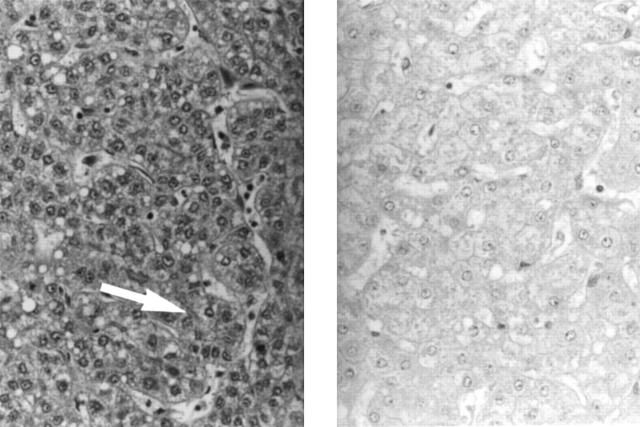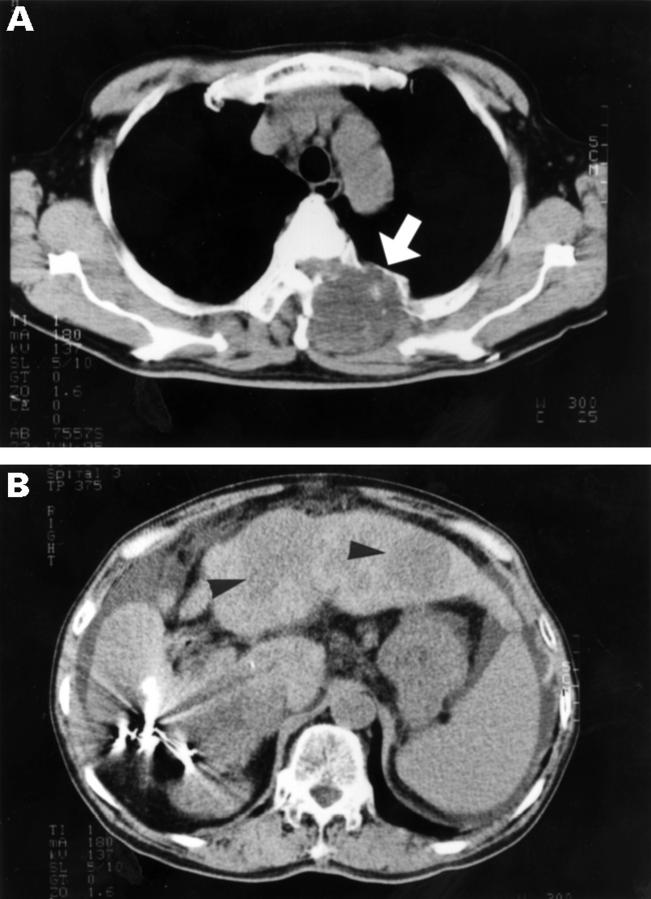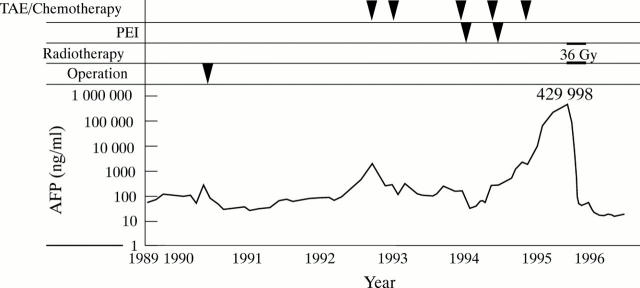Abstract
Spontaneous regression of hepatocellular carcinoma is a rare phenomenon. Abscopal regression of tumours resulting from the effect of irradiation of a tissue on a remote non-irradiated tissue is also rare. The case of a 76 year old Japanese man with hepatocellular carcinoma that regressed after radiotherapy for thoracic vertebral bone metastasis is described. Serum levels of tumour necrosis factor-α increased after radiotherapy. The findings suggests that such abscopal related regression may be associated with host immune response, involving cytokines such as tumour necrosis factor-α.
Keywords: hepatocellular carcinoma; abscopal effect; radiotherapy; tumour necrosis factor-α; bone metastasis; spontaneous regression
Full Text
The Full Text of this article is available as a PDF (160.9 KB).
Figure 1 .
Histological examination of a section of the tumour of the liver showing a well differentiated hepatocellular carcinoma (left panel). Note the rather slender cell cord composed of small tumour cells. Microacinar formation (arrow) is also seen. Nuclear crowding is evident compared with that in control tissue obtained from the same liver (right panel). Haematoxylin and eosin; original magnification ×80.
Figure 2 .
Hepatic angiogram obtained in November 1992 showing multiple hypervascular stains in the right lobe (arrows).
Figure 3 .
Thoracic and abdominal computed tomography scans obtained in June 1995 showing a mass in the second thoracic vertebra (arrow) (A) and multiple low densities in the liver (arrowheads) (B).
Figure 4 .
Thoracic and abdominal computed tomography scans showing disappearance of the mass from the second thoracic vertebra (arrow) (A) and a remarkable regression of the hepatic lesions (arrowhead) (B) one month and 10 months after radiotherapy respectively.
Figure 5 .
Clinical course. Note the immediate fall in serum α fetoprotein (AFP) and increase in tumour necrosis factor (TNF)-α after radiotherapy for bone metastasis. TAE, transcatheter arterial embolisation; PEI, percutaneous ethanol injection; HGF, hepatocyte growth factor.







